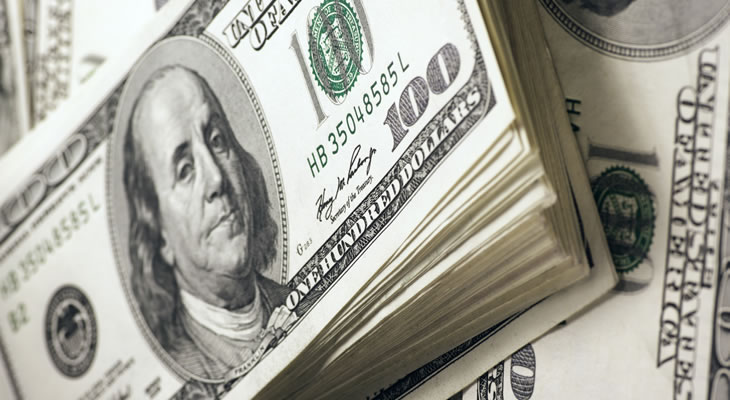GBP/USD Exchange Rate to Climb if Payrolls Rose by 300K in August?
The Pound US Dollar (GBP/USD) exchange rate is trending down this morning, as UK headwinds depress the Pound (GBP) while the US Dollar (USD) benefits from growing risk-off sentiment. If US data prints as expected this afternoon, the ‘Greenback’ may extend its gains, buoyed by rising employment levels.
At the time of writing, GBP/USD is trading at $1.1622, down 0.3% from today’s opening levels.
US Dollar (USD) to Firm on Positive Employment Data?
The US Dollar is trading broadly higher this morning, managing to shrug off initial risk-on headwinds as market sentiment turns more bearish.
Debate over the likely size of the Federal Reserve’s upcoming interest rate hike had also capped gains for the currency. While a 75bps hike in September is looking far more likely than it did a month ago, several Fed policymakers remain noncommittal in their use of rhetoric ahead of the event.
Nevertheless, today’s ADP jobs report is broadly expected to support the ‘Greenback’ in the hours ahead, as the survey resumes with methodological changes intended to improve accuracy.
Following a weakening correlation between ADP data and official private-sector jobs figures, markets expect the survey’s revised framework to yield more reliable results and are likely to place more significance upon the data.
Furthermore, indications that the jobs data could reveal a ‘cooling off’ in the jobs market – via a tip from White House spokeswoman Karine Jean-Pierre – have lowered expectations, meaning a positive release – as forecast by economists – is likely to trigger a greater USD upside.
Pound (GBP) Depressed by Weak Economic Forecasts
The Pound has slumped against the majority of its peers this morning and is likely to extend the downtrend as downbeat economic forecasts continue to roll in.
Not only is a weakening market mood putting pressure upon GBP exchange rates, but Sterling is also depressed by falling UK government bonds and rising borrowing costs, as well as painful inflation expectations and gas price headwinds.
Financial analysts observe that against the US Dollar, the Pound is currently trading around its lowest level since March 2020, as Britain’s economic problems multiply and solutions appear elusive.
Given a weakening of confidence amongst consumers and businesses, a hike in 10-year UK government bond yields represents demand for a higher rate of return from investors. Such demand is fuelled by volatile market conditions, including surging inflation and rapidly rising interest rates.
Meanwhile, discontent among rail workers seeking higher pay and more stable working conditions has led to the announcement of a further 24-hour strike in September.
The leader of the TSSA union, Manuel Cortes, said the blame for ongoing industrial action lay with the transport secretary, who continues to block meaningful negotiation between union leaders and railway bosses.


Comments are closed.